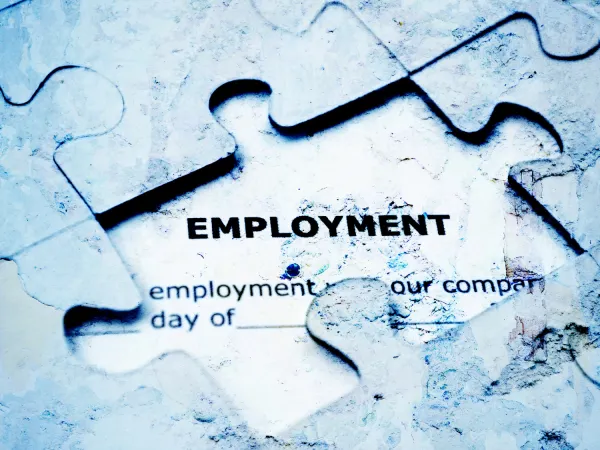
Say's Law: An Overview
What Is Say’s Law?
Say's law identifies the origins of the demand for goods in a market, and is often expressed by the phrase, "supply creates its own demand." However, this simple, catchy phrase is often used in a manner that misinterprets the original author's insights into how markets operate. The original concept is derived from a book published in 1803 by French economist Jean-Baptiste Say entitled, Treatise on Political Economy, or the Production, Distribution, and Consumption of Wealth.
Say's observations of how markets operate led him to recognize that consumers cannot express their demand for goods in one market without first acquiring income that is derived from helping supply goods to other markets. This insight is also referred to as Say's law of markets. Classical economists like David Ricardo and James Mill created various models of the economy that illustrate how income is received in the form of profits from owning a business, labor wages from working for an employer, or rents from leasing out land or physical capital.
Say recognized that money income is more than merely a medium for exchanging goods in a market. It is also is a unit of account reflecting the value of consumer demand for goods in a market. Say understood how this value cannot be fully expressed unless the consumers have full access to the earnings that they receive from supplying value in other markets.
The Implications of Say's Law
The phrase "supply creates its own demand" tends to obscure the inherent limitations of this key economic concept when it is used to understand market processes. Unfortunately, this lack of clarity often leads to faulty market implications and poor economic policies.
For example, this phrase may be interpreted as stating that the supply of some product in the market somehow motivates the purchase of some product. Instead, Say's perspective addresses how the demand for goods expressed across all consumers is dependent upon each receiving income from their own contributions to supplying goods across all markets.
When a wide variety of valuable goods is supplied across a multitude of markets, this creates the opportunity for each unique worker to assist in producing some type of good and receive income for their effort. This income enables workers to also be consumers who can then express their own demand for all the various goods in the market. Thus, "supply creates its own demand."
Classical Economics and Law
While applying Say's perspective to the entire economy does reflect the vast diversity goods across a multitude of markets, it's specific application is often misplaced. In fact, critics of Say's law note that this perspective implies that aggregate supply should generally equal aggregate demand in the economy. However, history has shown that an excess aggregate supply of goods frequently occurs in any economy, and that business cycles persist over time. Does this evidence negate Say's law?
The classical economics perspective would argue that supply creates its own demand when markets are at equilibrium. However, equilibrium occurs only when purchasers and sellers have time to adjust their plans to economic shocks.
Say's law is applicable when sufficient time and flexibility exists for markets to find their natural equilibrium level of output. Say's law is properly applied to the national economy when examining markets in the long run. Adequate time is needed for both buyers and sellers to adapt to unforeseen changes in the market by altering their strategies and adjusting their market activities.
Austrian Economics and Say’s Law
Further, specific economic structural factors must be in place to facilitate the operations of a free market economy. The Austrian economics perspective would argue that supply creates its own demand whenever the market process is free from distortions that alter the price mechanism as a form of relevant information. This includes profits, wages, or any other measures reflecting the incentives affecting consumer and producer decisions in the market.
Say's law is applicable when markets are free from external interference. This includes intentional impacts from both legitimate actors (such as government intervention by imposing wage controls, production quotas, or income taxes) and illegitimate actors (such as acts of crime, terrorism, or war).
For example, government taxes on profits, wages, or rents are often designed to redistribute earnings in society. However, they also distort the level of income received by workers assisting in the production of valuable goods that supply the nation's economy. This creates a barrier to the process of translating the full value of supplying valuable goods into business owner profits or labor wages.
Such barriers can prevent workers from expressing the full value of their demand for consumer goods. This scenario can result in a persistent state of insufficient aggregate demand for goods, resulting in economic downturns and even a prolonged recessions.
Keynesian Critics of Say's Law
John Maynard Keynes created an economic model for the national economy which gained traction during the Great Depression, an era characterized by mass unemployment and severe deflation. The Keynesian economic perspective promoted the use of government fiscal policy to influence aggregate demand in an attempt to regulate the economic output of a nation's economy.
For example, the government can increase spending to increase aggregate demand (at least in the short run) by running budget deficits. Businesses expand their production capacity to meet the increased demand by making additional capital investment and employing more workers. Such investment increases economic output and stimulates the rate of economic growth. In this way, Keynesians propose the opposite concept to Say's law, where demand creates its own supply.
Using Say's Law in Designing Economic Policy
Many nations (such as the U.S.) experience prolonged bouts of slow economic growth, despite the economy operating at its natural rate of unemployment. In this scenario, fiscal policy may raise aggregate demand, but businesses cannot increase production capacity by only raising their level of physical capital investment. They must also hire more workers from a labor market that is already operating at full employment equilibrium.
As a result, producers must pay higher wages to all workers to encourage new workers to enter into the labor force. Yet, higher wages increases the cost of production and contributes to overall price inflation in the economy. Ultimately, using Keynesian fiscal policy creates demand-pull inflation, forcing a necessary tradeoff between higher economic growth and lower price inflation.
A classical economist would point out that applying Say's Law to economic policy can provide insights for designing an economic policy that creates different type of tradeoff. For example, policies could increase worker and business owner access to income that represents the full share of value that they generate by supplying valuable goods to the economy. This can be achieved by reducing or eliminating existing taxes and regulatory burdens that can hinder worker access to the actual value they add to the economy.
This supply-side approach to economic policy avoids the unwanted side-effects induced by fiscal policy, such as higher price inflation in the short run and a higher government debt burden in the long run. However, reducing labor market distortions like taxes and market restrictions implies that the gains in economic growth will be partially offset by achieving fewer of the social policy goals that are sustained by income redistribution or business regulations.


